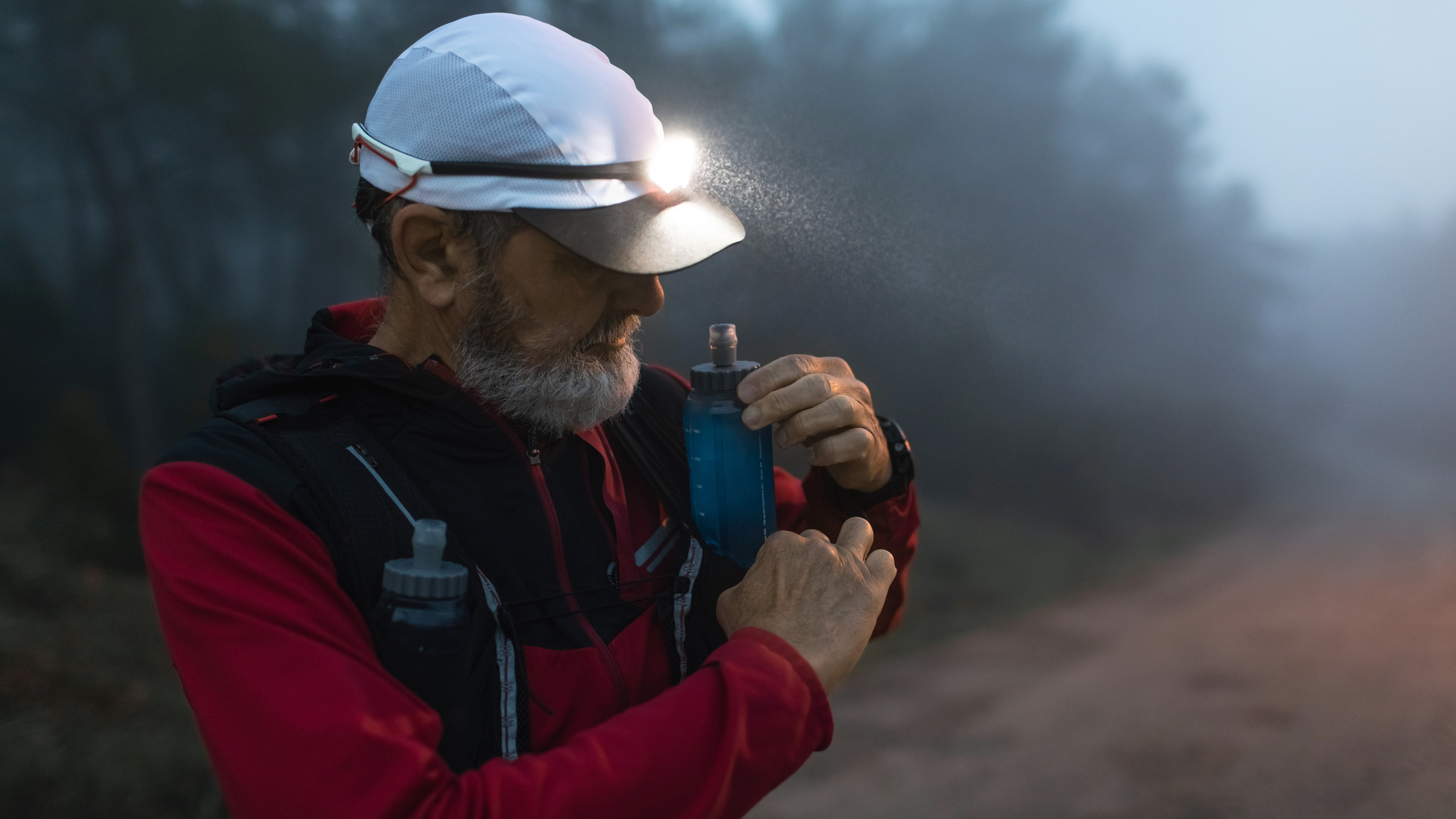[ad_1]

The purpose of ingesting water when you run is to interchange the fluids misplaced throughout train. “You lose water by sweating and a minimal quantity by water vapor once you breathe,” says Ruddock.
Figuring out your sweat charge will inform you how a lot water it is advisable exchange. Sweat charge is set by physique temperature, and it’s completely different for each particular person.
“Fitter individuals will sweat earlier as a result of their threshold, by way of their core temperature, will likely be decrease. The speed at which we sweat is set by what number of sweat glands now we have and the way we are able to activate them.”
Usually sweat charges vary between one liter and three liters an hour. Girls are inclined to sweat lower than males, which might make physique temperature regulation extra difficult in scorching environments. Sweat charges may also differ relying on the temperature, wind power and the way arduous you’re working.
“There’s a easy option to assess the quantity of water you want. Weigh your self earlier than and after train and both drink nothing or account for the quantity of water you could have ingested,” explains Ruddock.
It’s best to calculate this after a 60-minute run as a way to measure your sweat charge per hour. One gram of misplaced weight equates to round a milliliter of water, so a lack of 1kg would be the equal of 1 liter.
In a really perfect world, you’ll need to drink the quantity of liquid that you just lose whereas working, however as Ruddock factors out, this isn’t at all times sensible.
“In case you sweat three liters an hour how are you going to presumably drink this quantity of water whereas working? You’ll have to be ingesting continuously,” he says. “And the opposite drawback is that even when you will get it into your intestine, maximal gastric emptying charge is someplace round 600ml per hour, however is extremely particular person, depending on the quantity of fluid throughout the abdomen, the composition of the fluid and the depth of train.”
Understanding your sweat charge is subsequently most helpful for restoration since you are restricted by your gastric emptying charge. Throughout a sweaty run you’ll be able to intention to drink as much as one liter an hour, however the remainder of the fluid loss needs to be topped up when you cease.
“We are saying that for restoration it is advisable drink 1½ occasions the quantity you could have misplaced,” says Ruddock. “If I’ve misplaced two liters of fluid I might want to ingest three liters in restoration.”
[ad_2]
Source link



